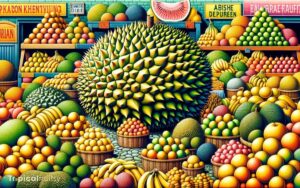What Is the Meaning of Durian? Unlocking Mysteries!
The durian is a tropical fruit renowned for its distinctively large size, spiky exterior, and strong odor. It is widely celebrated in Southeast Asia as the ‘king of fruits,’ reflecting its status in both cultural importance and unique taste.
Durians provide an array of nutrients, including vitamins, minerals, and dietary fiber, making them a healthful addition to the diet for many.
The durian fruit is an exotic food item that is as much known for its pungent smell as it is for its rich, custard-like texture and taste.
The flavors have been described as a blend of savory, sweet, and creamy, which can vary between durian varieties.
Its nutrition profile includes:
The durian is usually eaten fresh but is also used in cooking and baking, appearing in traditional dishes and modern culinary creations alike.
Durian’s unmatched flavor and nutritional benefits continue to captivate both locals and curious food enthusiasts globally.
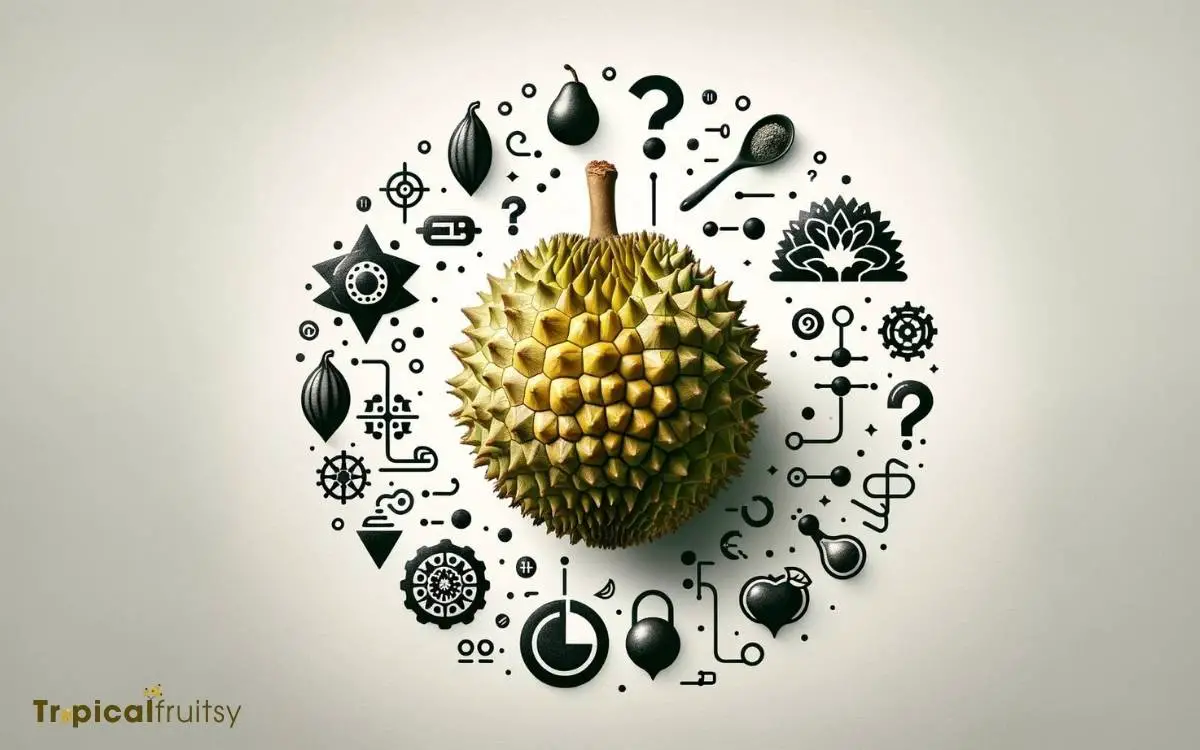
Key Takeaway
Nutritional Profile of Durian Fruit: The King of Fruits
| Nutrient | Amount per 100g |
|---|---|
| Energy | 147 kcal |
| Carbohydrates | 27.09g |
| Dietary Fiber | 3.8g |
| Sugars | 6.75g |
| Fat | 5.33g |
| Protein | 1.47g |
| Vitamin C | 19.7mg |
| Thiamin (Vitamin B1) | 0.374mg |
| Vitamin B6 | 0.316mg |
| Potassium | 436mg |
| Water | 65g |
Durian’s Cultural Significance
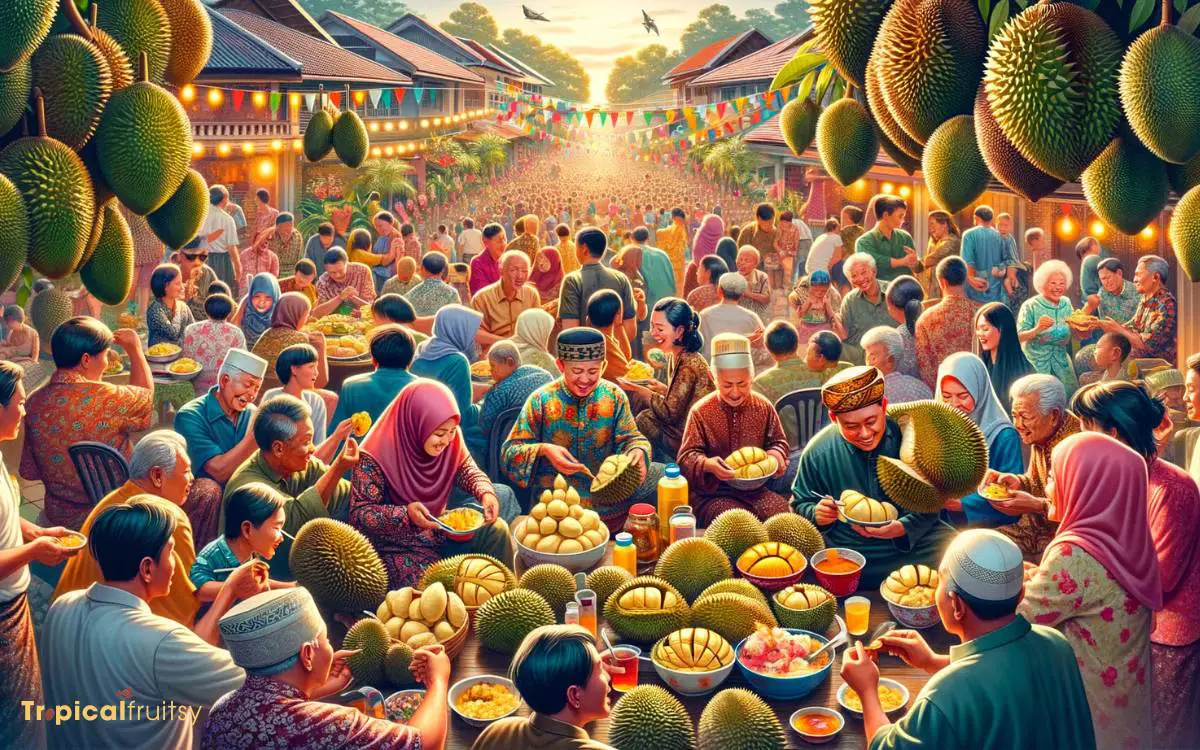
Durian holds a revered status in many Southeast Asian cultures, often considered the ‘king of fruits’ due to its distinctive taste and aroma.
This cultural icon embodies a paradoxical blend of allure and aversion, where its potent scent is as much a subject of adoration as it is of controversy.
The durian is not merely a fruit but a cultural artifact, signifying wealth, social standing, and an acquired taste that demands respect. In societal gatherings, the presence of durian is a signifier of festivity and generosity.
Analytically, its significance extends beyond gastronomy, infiltrating linguistic expressions, artistic representations, and even regional economies.
The durian fruit encapsulates the complexity of cultural identity, where its divisive nature mirrors the intricate tapestry of Southeast Asian traditions and social mores.
The Infamous Durian Aroma

Why does the aroma of durian provoke such intense reactions ranging from deep appreciation to vehement repulsion? The scent of durian is a complex biochemical mosaic that challenges the olfactory system.
Scientific analysis reveals that its distinctive fragrance is due to a combination of volatile compounds, each eliciting varying sensory responses.
To understand this phenomenon, consider the following components:
- Esters and Ketones: These contribute to the sweet, fruity notes that some find pleasant.
- Sulfur Compounds: Reminiscent of rotten eggs, these elements are often responsible for the off-putting aspect of the smell.
- Alcohols: They add to the pungency and can make the aroma more penetrating.
- Acids: These provide a sharp, sour edge that can be either enticing or disagreeable.
- Amines: Their presence can evoke comparisons to decaying fish or onions, intensifying the divisive nature of durian’s aroma.
Culturally-informed analysis shows that durian’s aroma is not merely a matter of individual preference but also one of acquired taste, deeply rooted in specific cultural contexts.
Nutritional Profile of Durian
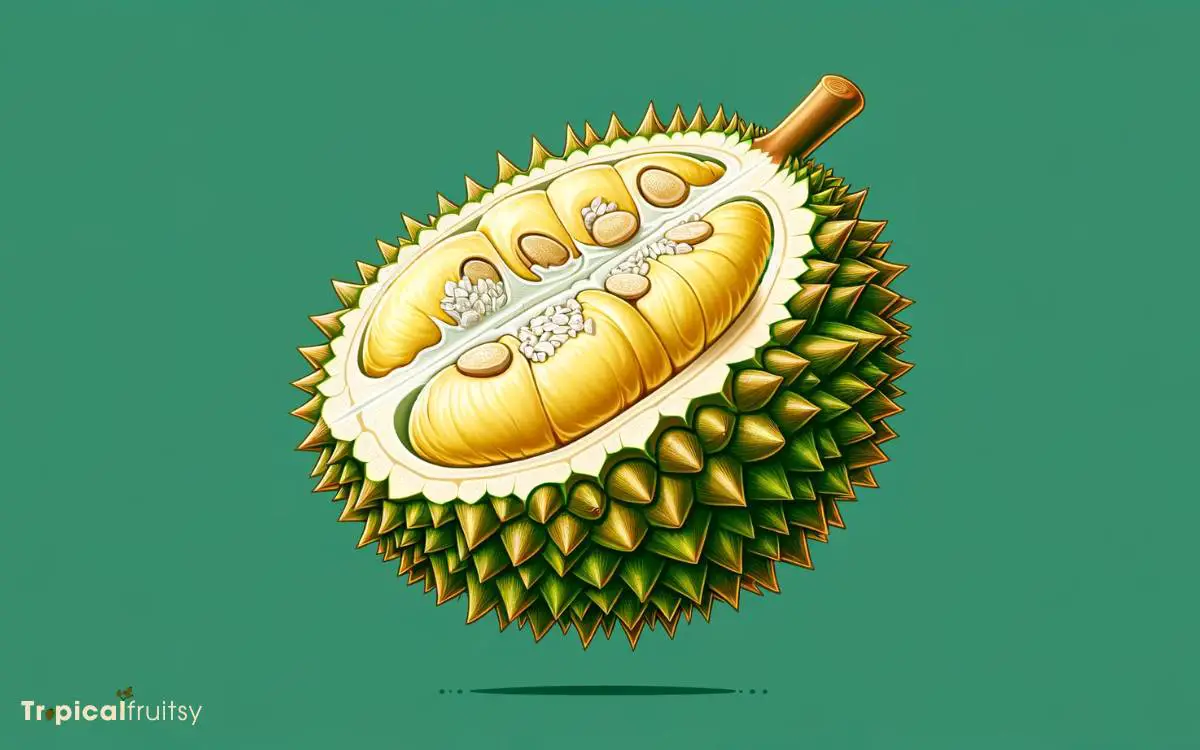
While often overshadowed by its potent aroma, the durian fruit boasts a rich nutritional profile that includes a high content of vitamins, minerals, and dietary fiber. This tropical delicacy, while divisive in scent, is undeniably generous in its nutritional offerings.
The table below provides a concise overview of key nutrients found in durian:
| Nutrient | Amount per Serving (100g) | % Daily Value* |
|---|---|---|
| Calories | 147 | 7% |
| Fat | 5g | 8% |
| Fiber | 3g | 12% |
| Vitamin C | 33mg | 55% |
The analytical breakdown of durian’s composition reveals a fruit that is not only culturally significant but also a powerhouse of essential nutrients.
Its high vitamin C content, for example, is noteworthy, as it plays a vital role in immune function and skin health, among other benefits.
The presence of dietary fiber aids in digestion and can contribute to a feeling of fullness, which may be helpful for weight management.
Durian’s unique nutritional makeup makes it an important fruit in the regions where it is both celebrated and consumed.
Culinary Uses and Recipes

Beyond its nutritional value, durian is a versatile ingredient in a variety of culinary creations, ranging from traditional Southeast Asian dishes to modern fusion cuisine.
Chefs and home cooks alike harness the fruit’s unique flavor profile to craft both savory and sweet dishes that are culturally significant and sensorially intriguing.
- Durian Pancakes: A beloved street food in many Asian countries, featuring a creamy filling.
- Durian Ice Cream: A smooth, tropical treat that balances the fruit’s intensity with sweetness.
- Durian Sticky Rice: A Thai dessert that combines the custard-like texture of durian with glutinous rice.
- Durian Puffs: Light pastries filled with a durian cream, often served at high tea.
- Tempoyak: A fermented durian condiment used in Malaysian and Indonesian cuisine.
Analyzing these culinary practices reveals how integral durian is to regional food identity. This cultural emblem, however, polarizes opinions worldwide, leading us to the next topic of discussion: the love or hate relationship many have with durian.
Love or Hate: The Durian Debate
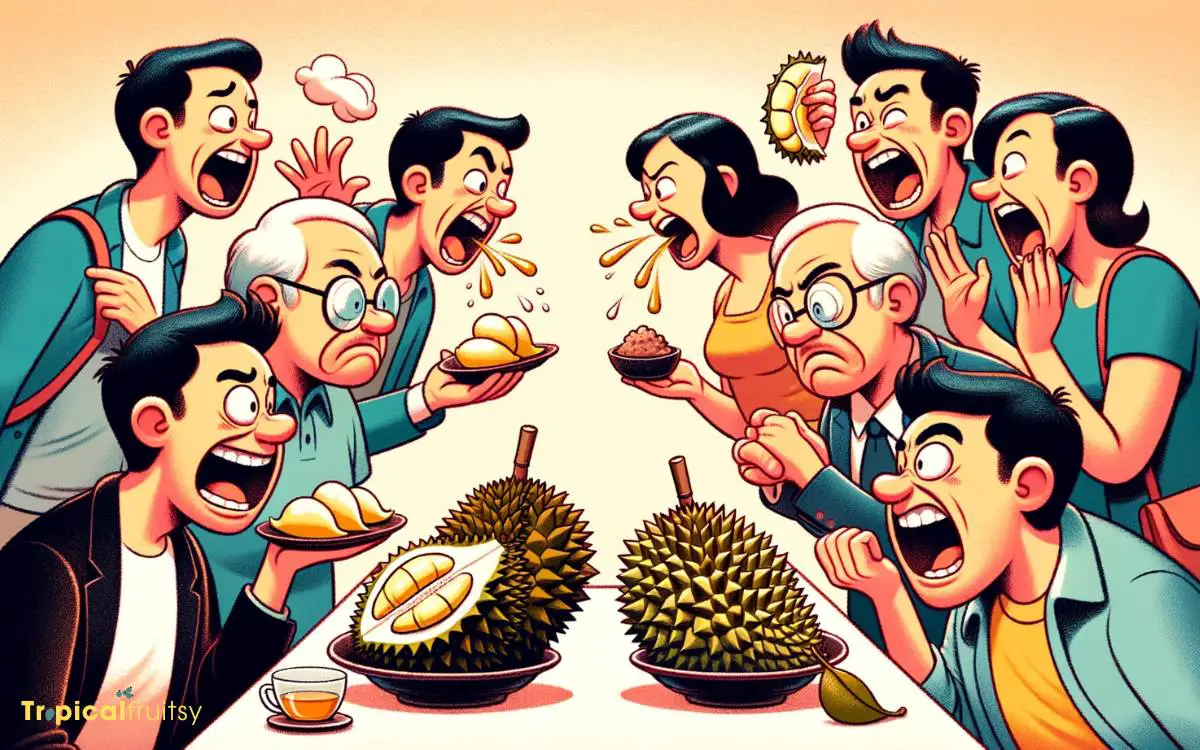
Although durian is renowned for its distinctive taste and aroma, it elicits sharply divided reactions from people around the world, making it a subject of passionate debate among food enthusiasts.
The fruit’s complex profile has given rise to a dichotomy where it is both celebrated and reviled.
Here is an analytical breakdown:
| Aspect | Pro-Durian Argument | Anti-Durian Argument |
|---|---|---|
| Taste | Rich custard-like, with sweet notes | Overpowering, with an unusual flavor |
| Aroma | Intense, aromatic, and unique | Pungent, unpleasant to some |
| Texture | Creamy and smooth | Off-putting to those preferring firm |
| Cultural Significance | Revered in Southeast Asia, symbol of identity | Misunderstood, often stereotyped |
Understanding this dichotomy requires acknowledging that the durian experience is subjective, with cultural factors playing a significant role in its acceptance or rejection.
Conclusion
The durian fruit embodies a paradox within the culinary realm, revered and reviled in equal measure. Its pungent aroma elicits strong reactions, yet for many, this scent heralds a rich and complex flavor profile unmatched by other fruits.
Despite its divisive nature, durian stands as a cultural icon, its nutritional bounty and culinary versatility undiminished.
The durian debate thus continues, a testament to its enigmatic presence on the global stage of gastronomy.



